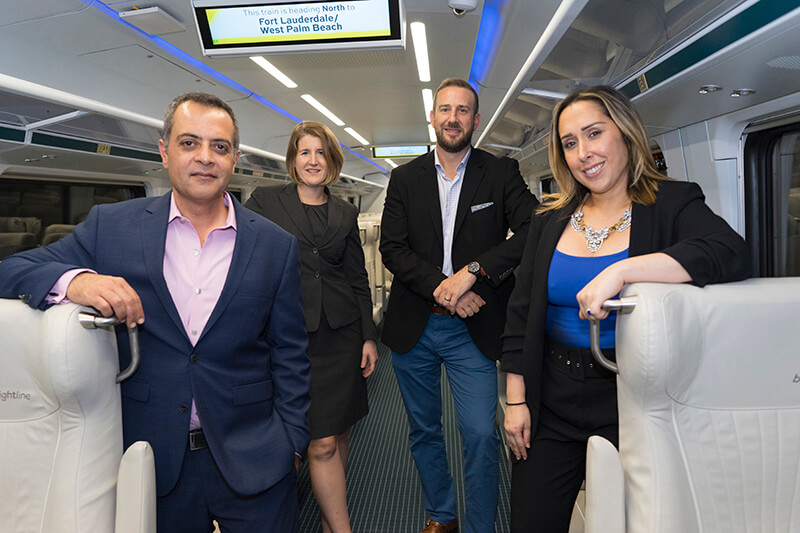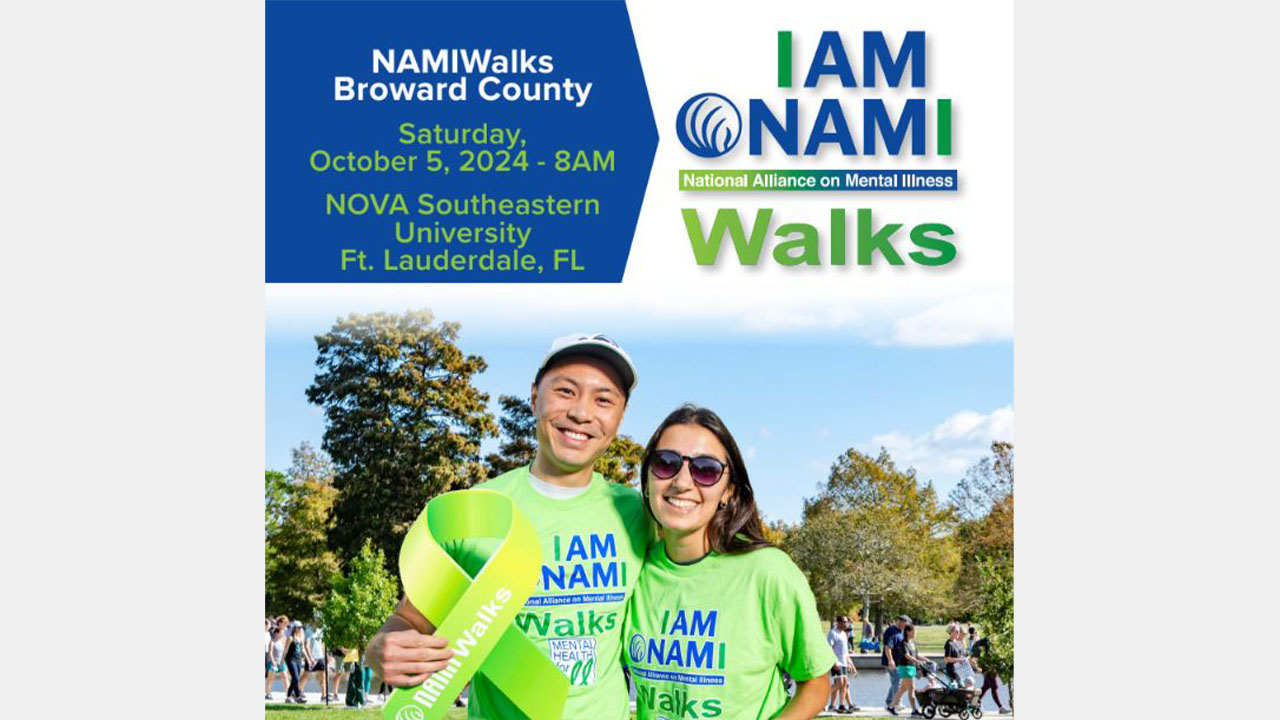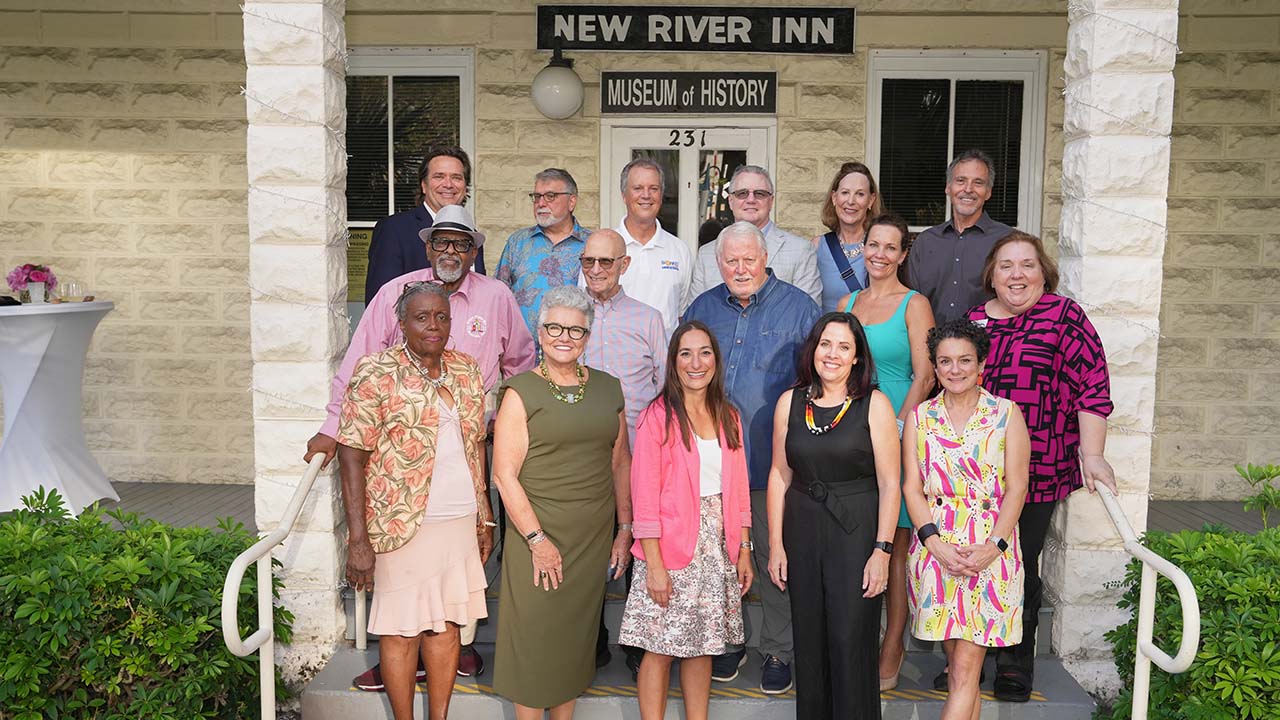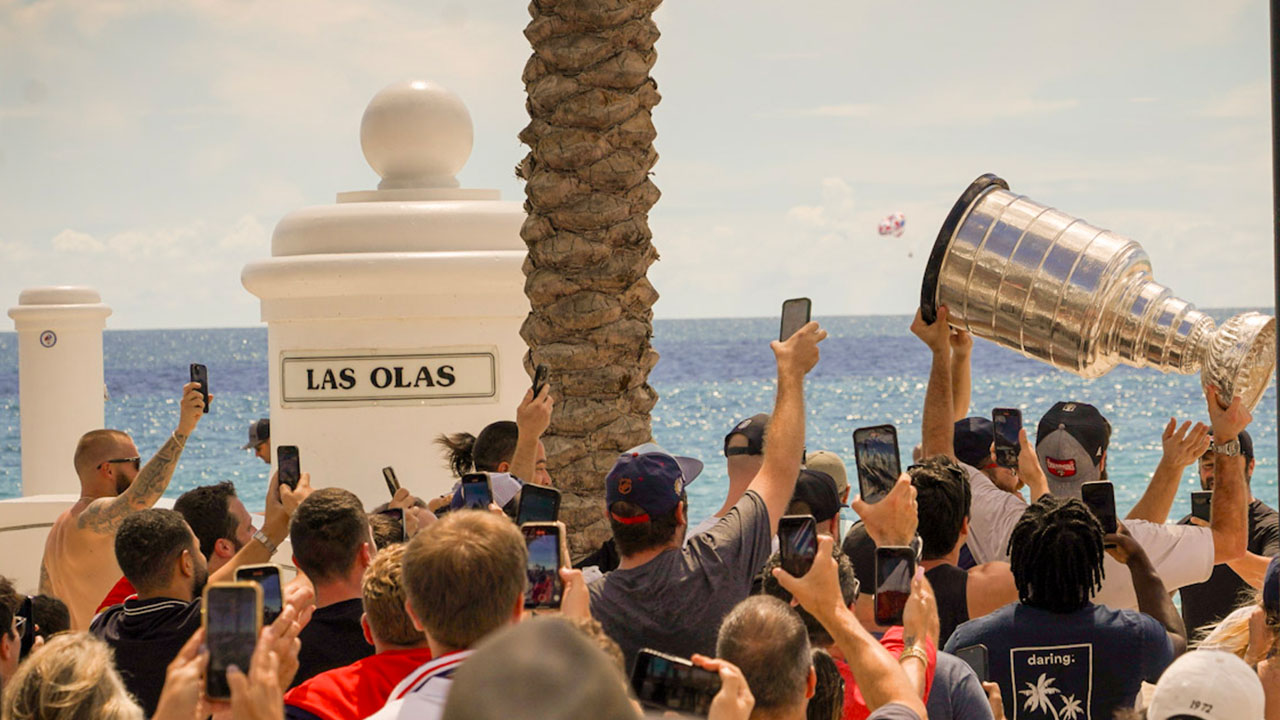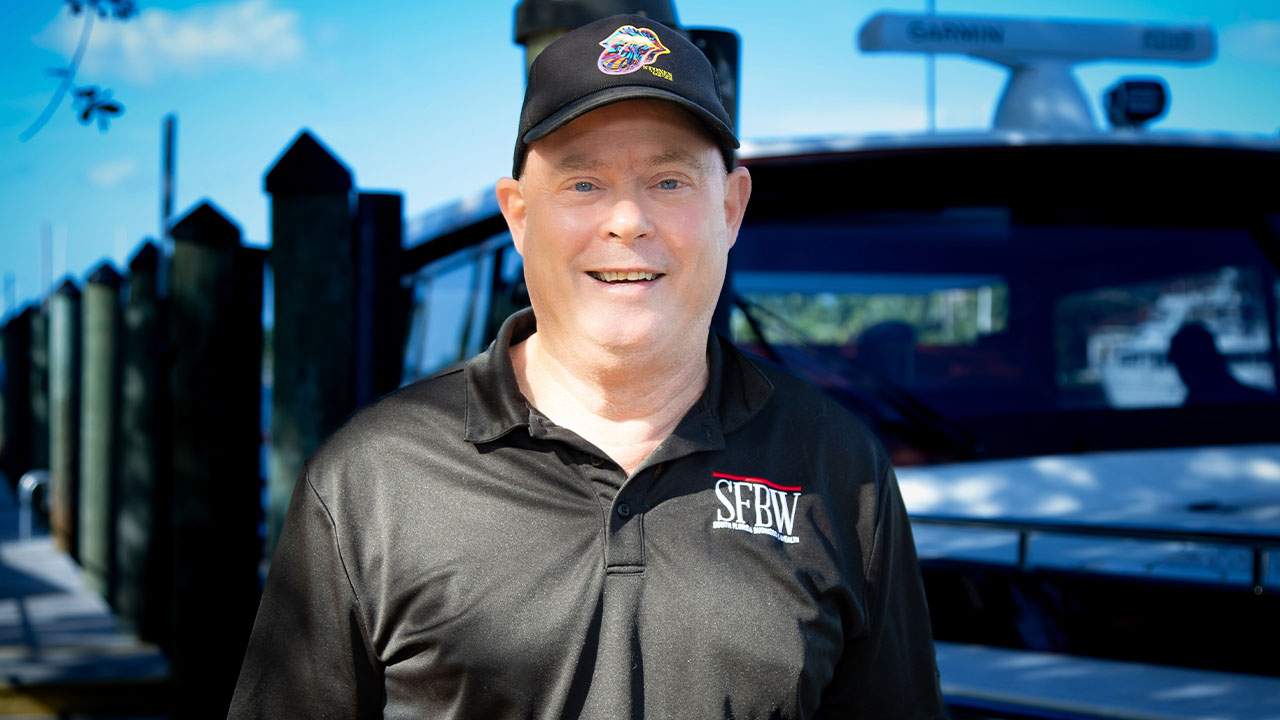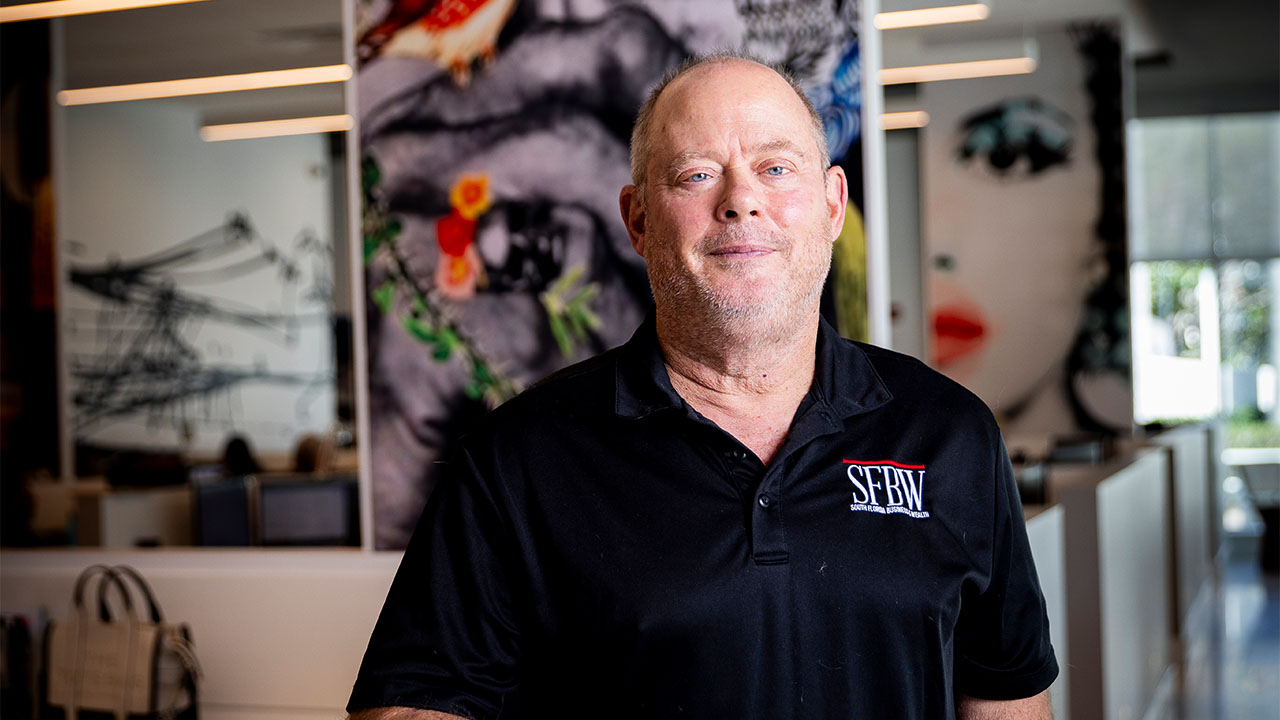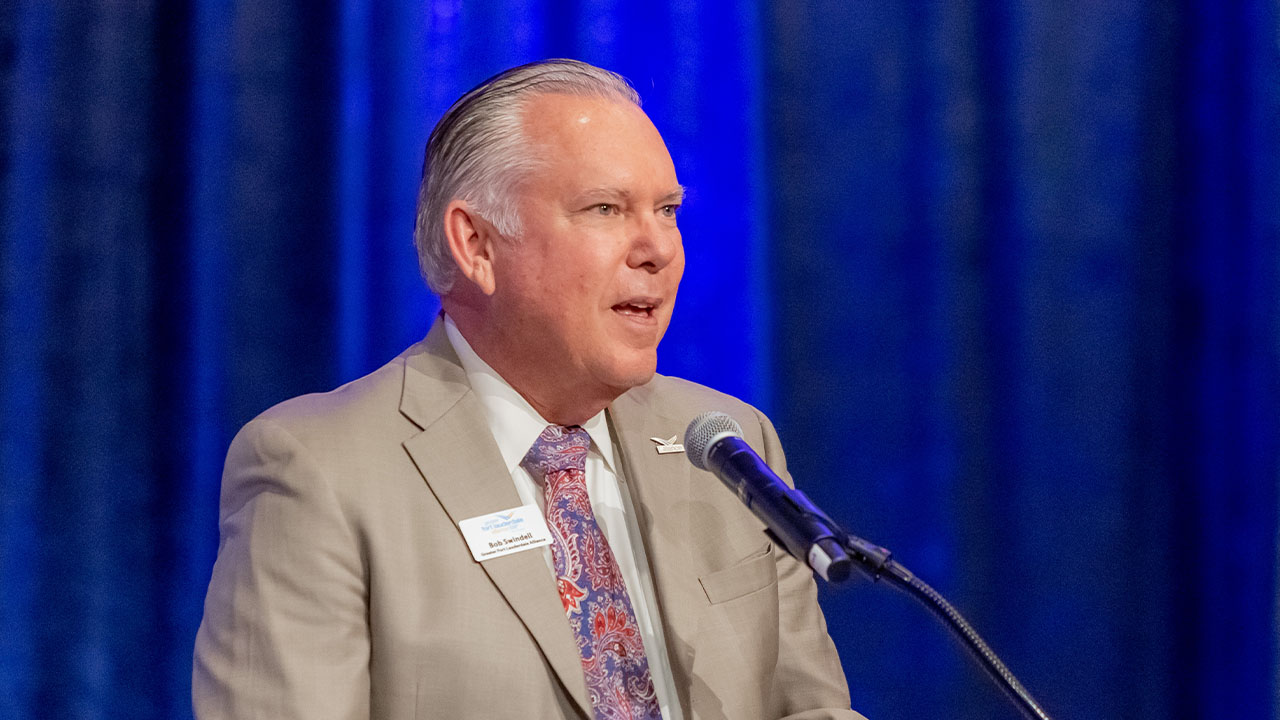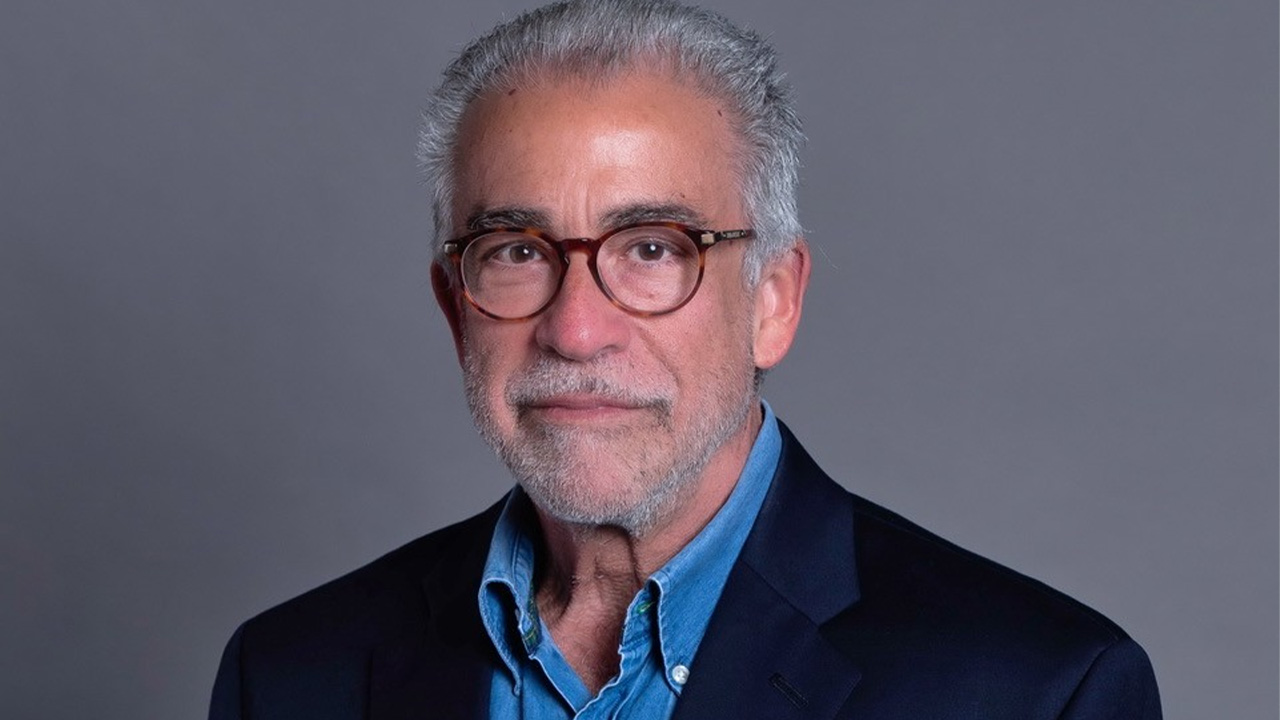By Kevin Gale | Photography by Patrick Clinton
Call this South Florida’s back to the future journey.
On April 7, 1896, Henry Flagler’s railway made history when it reached a small settlement called Fort Dallas along Biscayne Bay. Julia Tuttle and the Brickell family each gave Flagler 100 acres to bring his railroad to life and develop a town.
It worked. Flagler built a grand hotel called The Royal Palm, which drew visitors to a previously obscure tropical paradise. A real estate boom began.
While Flagler’s Florida East Coast Railway opened up South Florida for development and vacation destinations, its passenger service eventually fell victim to cars and jet travel. The last passenger train in Miami arrived on July 31, 1968, but didn’t even reach downtown because the station was demolished five years earlier. The tracks near the Miami-Dade Courthouse were ripped up, along with those south of the river, which turned into the Metrorail right of way. For 44 years, the FEC’s 12 acres were largely ignored.
In 2012, history began to repeat itself, but with a modern twist.
The Florida East Coast Railway announced plans for a privately funded, high-speed rail service from Miami to Orlando. What led to the demise of passenger service now led to its resurrection: Highways are crowded and air travel in the post-9/11 era is a hassle.
The federal government paid for an incredible infrastructure, such as interstate highways, in the 1950s that helped kill trains, says Brightline President and Chief Operating Officer Patrick Goddard. “Now those roads are congested. There’s nowhere to go. Passenger rail is really one of the only viable ways to solve those problems—particularly for routes too short to fly and too long to drive.”
The future of private, high-speed passenger service in the United States lies on the shoulders of Brightline. Led by Goddard and his management team, if they succeed, similar service could pop up around the United States. Brightline officials mention additional routes, including Los Angeles to Las Vegas, Atlanta to Charlotte, Dallas to Houston and Chicago to St. Louis as possibilities.
Brightline currently goes from Miami to West Palm Beach, but service to Orlando is expected to begin by 2021. Brightline also is seeking rights from the state to extend service along Interstate 4 to Tampa.
The most important ingredient for Brightline’s success is customer experience, which starts with making reservations on its app or website and extends to arrival at its sleek stations and sitting in amenity-laden cars with leather seats and attentive service.
With that in mind, it shouldn’t be surprising that Goddard has an extensive background in the hotel industry. He previously was the president and chief operating officer for Trust Hospitality, which has developed luxury hotels. When he led Ocean Blue Hospitality, he helped reposition the Clevelander Hotel & Bar and the Raleigh Hotel on South Beach.
“I was very attracted to the hospitality aspect that Brightline offered,” he says. “My previous life in hospitality was very much about making the commodity of accommodations an experience. Here, I get the opportunity to make the commodity of transportation into more of an experience.”
The experience includes allowing business travelers to get reliable Wi-Fi service at seats that have USB and power plugs. Instead of fuming in traffic on Interstate 95, professionals can do work on their laptops that can result in billable hours. Business customers are so important to Brightline that it is poised to unveil an enhanced premium class with more amenities.
For those used to traveling on I-95, taking Brightline is almost a surreal experience. It pulls out of stations and builds up speed, hitting nearly 80 mph for most of the journey. The ride is smooth, and attendants push snack and beverage carts down the aisle. There’s barely enough time to finish a drink on the roughly 30-minute rides between the city segments.
In its own way, Brightline is shrinking South Florida by making it seem smaller with its ease of travel.
Families in West Palm Beach can enjoy outings in downtown Miami’s Bayfront museums, which are a short Lyft or Metromover ride from the Miami station. The arts and entertainment district in Fort Lauderdale is two blocks south of the station while downtown and the burgeoning Flagler Village are just east of the tracks. In West Palm Beach, Clematis Street and Cityplace are within a short walk.
For leisure travelers, Brightline’s marketing is all about providing your next cool experience without the stress of being stuck in traffic or cut off by another driver on I-95.
While Brightline’s innovations are impressive, the team matters just as much to Goddard.
“I think my satisfaction is the satisfaction of our guests and how often we receive accolades for our teammates,” he says. “They have lived the mantra of taking a genuine interest in other people. Seeing that materialize and hearing it directly from guests is immensely satisfying.”
For frequent Brightline travelers, the teammates do live up to the attributes Goddard describes: positive, welcoming, upbeat and high energy.
Brightline had 74,780 passengers in the first quarter, when it had service only between West Palm Beach and Fort Lauderdale, and only eight round trips a day, Goddard says. Brightline now has added service to Miami, which he expects will represent 80 percent of its market.
Just after August started, Brightline increased its schedule to almost hourly service with 16 trains a day, starting at 5:30 a.m. in West Palm Beach and ending with the last train leaving Miami at 11:13 p.m. Goddard thinks there is an opportunity to increase that frequency to 30 minutes in the future.
Goddard didn’t give projections on when Brightline will be profitable, but it is well in line with the three-year ramp-up of passengers seen on services like Amtrak’s Acela and Eurostar, he says.
Some media reports have questioned how easily Brightline can sell bonds to supports its investments and whether it could run low on cash if that doesn’t happen soon. However, Brightline has deep-pocketed parents. Brightline’s direct owner is Fortress Investment Group, which has $36.1 billion in assets under management. Fortress was purchased last year for $3.3 billion by Japan’s SoftBank Group, which ranks 39th on the Forbes Global 2000 list with an $84.9 billion stock market capitalization.
Business travelers are a key part of Brightline’s business model, and they are starting to see the value of having productive time on the train vs. driving, Goddard says. For someone going to West Palm Beach to Miami in rush hour and then back in the evening, that could be four hours in the car vs. two hours on the train. Think of an attorney who bills $150 an hour, and it starts to make sense.
There’s also growing interest in group travel, Goddard says. For example, he had a friend who is a fire chief in the Miami area and wanted to bring 20 staff members to a luncheon in West Palm Beach.

Brightline’s cost structure is still evolving, but segment trips have been available for $30 roundtrip during Brightline’s startup, which makes it competitive with taking a car. Counting gas, tolls, insurance and wear and tear, driving can cost 80 cents to $1 a mile, Goddard points out. “Once people experience Brightline, they don’t want to get back in the car and drive. The sales team’s biggest mission is not price, it’s about understanding the experience. It’s difficult to explain. People have preconceived notions of train travel. When they get on our train, people say ‘Wow.’ ”
Brightline’s business model is different than commuter trains, which are typically government-supervised. Frequent commuter train service is capital-intensive with a lot of stations, rolling stock, high-frequency schedules and staffing. Metrorail, for example, has trains every seven to nine minutes, Goddard notes. Brightline’s hourly service is a lot less capital-intensive.
“For us, intercity passenger rail is a profitable venture,” he says, mentioning Amtrak’s Acela service in the northeast, which costs about $1.80 a mile and is the only part of Amtrak that turns a profit.
One question is whether Tri-Rail will add commuter service along the Florida East Coast Railway tracks, which could help feed passengers into Brightline’s service and vice versa. Tri-Rail already has a platform at Brightline’s Miami Central station and plans to split its trains between downtown and Miami International Airport by the third quarter of 2019.

There’s been a major push in Miami-Dade to add commuter service from downtown to Aventura on the tracks used by Brightline, and Miami-Dade Transit Director Alice Bravo said last year that Brightline might be interested in operating the service.
Goddard says there are no specific plans at this point, but Brightline is working closely to improve mobility for people who live along the corridor. The effort is early in the planning stage, which includes looking at possible locations for stations.
What’s more concrete is the extension of Brightline to Orlando International Airport. New tracks will have to be built to connect the FEC mainline in Cocoa to the airport. Goddard expects to begin construction work this fall, with service rollout in early 2021. He’s contemplating 16 round trips a day. A café car will feature a full bar, and there will be more extensive food offerings on the trains to Orlando.
Brightline’s inquiry about using the right of way along Interstate 4 to extend service to Tampa resulted in the state issuing a request for proposal, which means others could apply. The deadline to apply is Nov. 7, and Goddard expects the state to give its decision by the end of that month.
“We expect to get it—for lots of reasons,” Goddard says. “There are a lot people who have talked about what we are currently doing. We are the only ones who have actually done it. A lot of technologies are interesting, but there’s no proof of concept. We have proof of concept here in South Florida. We think having two disjointed systems doesn’t make a lot of sense.”
The trip from Miami to Tampa will take about four hours, while Miami to Orlando will be three hours.
Goddard says he has spent a lot of time meeting with elected officials in Orlando and Tampa. “They know it’s going to be great for Tampa and great for Orlando just like Miami and West Palm Beach. It really regionalizes the state in a manner that was not previously possible.”♦
The Brightline Team: Meet three key executives

Ravneet Bhandari
Chief Commercial Officer
Bhandari is responsible for marketing, revenue management, sales, business development and strategic partnerships. He has a bachelor’s degree in economics from the University of Delhi and earned his dual MBA in marketing and finance from ESSEC Business School in France.
He was the CEO and co-founder of LodgIQ, a technology startup that developed revenue management software implemented by more than 500 hotels, and the chief commercial officer at Nor1, which provides machine-learning based merchandizing software implemented at nearly 8,000 hotels
Bhandari says he has experienced many of the world’s cutting-edge trains, including Virgin Trains in Britain, Eurostar and TVG on the continent, and Japan’s bullet trains.
“The one thing I would say, on a pound-for-pound basis, our product is probably in many aspects comparable but better. Some of that is the function of us being the most modern train. The other is the attention to detail in terms of design, customer access, overall comfort and luxury.”
Brightline is full of little touches, such as the touchless faucets and hand driers in the restrooms and the retractable platforms that fill the gap between the trains and platforms.
Bhandari is bringing his expertise in yield-revenue management to Brightline’s tickets, which are priced dynamically on a train-by-train basis using algorithms. For example, tickets for the upper-tier Select Service varied between $30 and $35 on one Friday, with the higher prices during mid-afternoon and evening rush hour service.
Bhandari’s challenge is to measure price elasticity for any given time of day.
“It’s not always about raising the price. It’s also about making sure at the appropriate time that we are developing enough value for customers based on price elasticity,” he says.
Brightline actively measures customer satisfaction, and Bhandari says the initial results rank above brands such as Amazon and Ritz-Carlton.
Over time, Brightline is getting a deeper understanding of its customers. The next iteration of its app will refine push notifications, push marketing and personalization. If a customer has a habit of traveling at a certain time, the app might send a message asking if the customer would like to book on the next departure. Customers who enjoy a glass of wine on their trips might be asked if they would like to have a drink onboard.
Technology also will be used to help make trips more seamless for customers. For example, Brightline could inform customers how they can take Metromover from the Miami Station to Brickell City Centre or use the Lyft, Avis or Zipcar services, which are Brightline partners.

Johanna Rojas
Vice President of Marketing
Rojas brings a strong background in marketing from the hospitality industry, including regional director of marketing for the Americas for Iberostar Hotels & Resorts and corporate director of marketing at Trust Hospitality.
A major challenge in her current role is educating consumers about a novel concept in the United States—a privately operated, high-speed rail service.
“We are in a very large educa-tional stage in a market not accustomed to this product offering. If we were in Europe, we would be having a different conversation.” People in the southeastern United States generally don’t understand passenger trains and what the experience is like, she says. “Once they get on the train, they fall in love with it. … More than a train, we are an experience. We have a long way ahead of us to educate consumers to get away from the car culture and educate them on what a premium product we are.”
Brightline is busy developing packages for travel, such as bundles for consumers. The process includes scrutinizing price points and how consumers perceive value.
Brightline is targeting C-suite decision-makers to enlist them in offering tickets to their employees. The selling points to the executives are reliability of service, safety, timeliness, and raising morale and productivity.
Partnerships are at the top of her list, such as performing arts centers and museums near the stations, which can serve as generators of demand for Brightline. The mantra is: “Where can Brightline take you today?”
That could include incentives, whether through Brightline or its partners. For example, Brightline has met with the Miami Heat; one concept could include the option to purchase a Brightline ticket when buying a game ticket. There could be a special train to Heat games with entertainment, food and beverage.
Expansion of the service to Orlando will further fuel partnerships with cruise lines, travel agents and wholesalers. For example, someone could fly into Orlando International Airport and take a trip on Brightline to experience South Florida.
Rojas says, “We don’t want to just be a transportation company, we want to be part of the journey and adventure—part of a conversation where people really want to see where you can take them.”

Beth Foster
Vice President of Human Resources
Foster oversees the employment and recruitment, development and training of Brightline’s nearly 300 employees. She has nearly 20 years of HR experience, including HR director at the Bellagio in Las Vegas.
Foster uses the word “team-mates” instead of “employees.” The goal is to treat the team like family and label their own tribe, she says.
So what does she look for when hiring? “We need to have people who love to interact with other people and come to work every day with a positive attitude and who are curious,” she says. Curiosity is important, because Brightline is a new concept. Everybody needs to learn.
Brightline uses the service profit chain concept, which essentially means you make your money from providing guest services. Company teammates are the start of the profit process, she says. The goal is to deliver amazing service to guests “who realize this is a different experience than flying to Orlando or driving in terrible traffic,” she says. “They will come back again and again and that will make us a profitable company.”
Orientation starts with two days of training. The first day focuses on guest services and policies while the second is about safety and security. Then there is structured departmental training, with each job having a checklist.
Foster says she is constantly on the lookout for good talent. “A lot of job postings are evergreen so we keep them open,” she says. This includes station and train positions.
Finance, marketing and information technologies are also positions where she keeps an eye out for talent. The eventual expansion of service to Orlando will lead to more hiring.
Foster recently was building a train-the-trainer program and a manager-training program that will help managers set vision, motivate teammates and coach them when things are not going the right way.
Brightline offers solid medical benefits and a competitive personal time-off plan, which is unusual for people who have worked in the rail industry, she says.
Brightline’s trains provide one more perk: “Free travel for teammates and close family members, which is a huge hit with our team, especially if they are living in Fort Lauderdale and West Palm Beach and working down here [in Miami].”
Construction Wave
Brightline has turned into a major spur for development in South Florida, especially in downtown Miami.
Retail, food and beverage venues are gradually opening at the MiamiCentral station complex. Joe & the Juice, which offers coffee, smoothies and sandwiches, already has opened on the ground floor. Central Fare, with 20 vendors in a food-hall setting, will open near the end of the year. Among the tenants announced are 800 Degree Woodfired Kitchen, Parliament coffee and Rosetta Italian baked goods.
Two office buildings in the MiamiCentral station complex, 2 Miami Central and 3 Miami Central, have been completed and include 270,000 square feet of office space. The developer, Brightline’s parent company, Florida East Coast Industries, is listing the properties for sale with Eastdil Secured.
Two apartment towers with 800 units are being built above the Brightline station. Brightline President and COO Patrick Goddard expects delivery at the end of 2019 and early 2020.
There’s also room for a sixth building just south of the station.FECI also has interest in developing a new county courthouse on land the county owns just west of the historic courthouse on Flagler Street.
In West Palm Beach, early leasing is expected shortly on Park-Line Palm Beaches, a 24-story, 290-apartment tower next to the Brightline station. That project was developed by FECI and Lincoln Properties.
In Fort Lauderdale, FECI has hired CBRE to lease space for the planned 101 Fort Lauderdale, a 190,000-square-foot office building with ground floor retail just south of the station’s garage.
There’s also plenty of discussion about redeveloping the area east of the station where the city and county have land.



